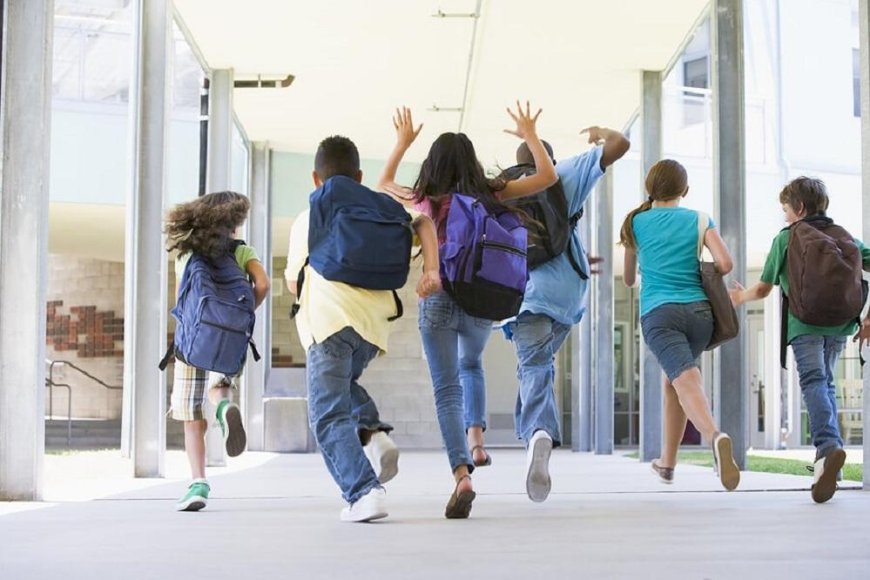Is it the end of school as we know it?
lack sufficient information to know how this problem is being solved at different educational levels. Is it the end of school as we know it.

The crisis derived from COVID-19 is assuming a radical change in the way of facing teaching and learning. It is obvious that we still lack sufficient information to know how this problem is being solved at different educational levels. Is it the end of school as we know it.
Is it the end of school as we know it?
The crisis derived from COVID-19 is assuming a radical change in the way of facing teaching and learning. It is obvious that we still lack sufficient information to know how this problem is being solved at different educational levels.
It is possible that we are facing a mere parenthesis after which we would return to the usual system. However, such an exceptional situation could be a unique opportunity to improve the operation of our school.
For now, the gap that separates students based on their cultural and economic capitals is becoming even more apparent. Parents - more like mothers - with high educational levels can become guardians of their children. Those with greater economic capacity can count on a good internet connection, several computers at home and the possibility of hiring private tutors online.
Lessons on the web
Parents of school-age children are having the opportunity to check out the excellent lessons that can be found online. With the support of a couple of cameras, adequate lighting, and - if that's the case - software packages, the creators of these lessons are able to get people to learn. The good thing about this huge number of videos is that everyone can choose the one that best suits their learning style.
Information and communication technologies can allow the center of gravity of the teaching-learning processes to shift from the person who teaches to the person who learns. This is the proposal of the inverted class, which consists in that the students learn the content of each lesson or topic through a video selected by the teacher - or prepared by him - outside of school hours, so that in the next session Its contents are clarified from the doubts or suggestions raised by the students.
Time dedicated to autonomous learning
If the face-to-face class consists of working on what has been seen at home (or simply outside the classroom or outside the presence of the teacher), it is most likely that the time dedicated to this autonomous learning will be much higher than strictly face-to-face. Teaching of this type requires radically redefining the role of the teacher.
With this autonomously acquired knowledge, it would be possible to analyze or investigate topics that, in a consensual way, are raised from the group of students together with their teacher. In short, it would be about going beyond the mere learning of problem solving mechanics and connecting scientific knowledge with reality.
Must Read: The 7 new era educational trends
But learning is not only or fundamentally listening to or seeing a teacher in the classroom or on the internet. It also consists of reading, investigating and, why not, memorizing what has to be memorized. Understanding subjects such as History or Literature requires, perhaps more than watching videos, reading books and articles from specialized magazines (and I have not forgotten the importance of reading in science subjects).
Give a boost to reading
A situation like the current one should be translated into a boost to reading. A student from the first year and perhaps much earlier“ should read a minimum of thirty or forty books throughout the calendar year. And, of course, it is important not to forget the growing importance of reading.
So far we are talking about subjects. It would be perfectly possible to work by projects. In this way, the separation between subjects is broken by globalizing the curricular contents. There is also the alternative of introducing other ways of working that are formally considered as subjects.
Reduce class hours
Under these conditions, why would you have to go to class every day or have so many hours a day of teaching? The number of hours the student spends in class could be considerably reduced. If, for example, it would be advisable for them to spend a few days visiting the online resources.
Part of these proposals would require changing the architecture of our centers: we would need more and more comfortable spaces to be able to read, rooms to debate in small groups, more laboratories, more music rooms.
Less teacher presence
A teaching with less presence of the teacher and less localized in the classroom is an invitation to the autonomy of people, to their ability to organize their time.
Perhaps one of the most serious problems of confinement is precisely this: what to do with this available time? From our school experience we should learn to dedicate time daily to reading (and not only literary texts), to intelligent conversation (usual in the good reader), to know scientific and technological advances, to enjoy and practice the arts, caring for others and our environment, practicing sport...
In short, the school should be key in the creation of a society of free and supportive people.
